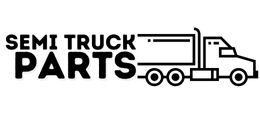Mastering Truck Body Parts A Comprehensive Guide for Truck Owners
Introduction to Truck Body Parts
Truck Body Parts Trucks are more than just vehicles; they’re reliable workhorses that haul cargo, transport goods, and navigate challenging terrains. At the heart of every truck’s functionality lies its body parts, essential components that not only define its appearance but also ensure its durability, safety, and performance.
In this introductory chapter, we embark on a journey to explore the intricacies of truck body parts. From the robust bumpers that shield the truck’s front and rear ends to the sleek grilles that not only enhance aesthetics but also facilitate engine cooling, each component plays a vital role in the overall functionality of the vehicle.
Quality truck body parts are not just accessories; they are investments in the longevity and efficiency of your truck. Whether you’re a seasoned truck owner or a newcomer to the world of heavy-duty vehicles, understanding the importance of these components is paramount.
Throughout this guide, we’ll delve into the diverse range of truck body parts, discussing their features, materials, customization options, and maintenance requirements. By the end of this journey, you’ll be equipped with the knowledge and insights needed to make informed decisions when it comes to selecting, upgrading, or repairing the body parts of your truck.
Join us as we unravel the world of truck body parts and discover how these seemingly mundane components contribute to the power, versatility, and reliability of these iconic vehicles.
Bumpers – Enhancing Protection and Durability
Bumpers serve as the first line of defense for trucks, safeguarding the front and rear ends from collisions and impacts. Beyond their protective function, bumpers also contribute to the overall aesthetics and ruggedness of the vehicle. In this chapter, we delve into the world of truck bumpers, exploring their diverse types, materials, and benefits.
Steel bumpers stand out for their unparalleled strength and durability, making them a popular choice among truck owners who prioritize ruggedness and protection. These heavy-duty bumpers are capable of withstanding impacts from off-road obstacles and provide excellent defense against collisions.
On the other hand, aluminum bumpers offer a lightweight alternative without compromising on strength. Their corrosion-resistant properties make them ideal for trucks exposed to harsh weather conditions or off-road environments. Additionally, aluminum bumpers can enhance fuel efficiency by reducing the overall weight of the vehicle.
For those seeking a balance between durability and affordability, plastic bumpers present a compelling option. While not as robust as steel or aluminum counterparts, plastic bumpers are lightweight, cost-effective, and easily replaceable. They are particularly popular in urban environments where low-speed impacts are more common.
Beyond material considerations, truck bumpers come in a variety of styles, including off-road bumpers with integrated winch mounts, prerunner-style bumpers with enhanced approach angles, and sleek, low-profile bumpers for urban use. Each style caters to different preferences and usage scenarios, allowing truck owners to customize their vehicles according to their needs.
Whether you’re navigating rugged off-road trails or commuting through city streets, investing in a quality bumper is essential for protecting your truck and ensuring your safety on the road. In the subsequent sections, we’ll delve deeper into the specifics of each bumper type, helping you make an informed decision that aligns with your trucking needs and lifestyle.
Grilles – Functionality Meets Style
Grilles are not merely decorative elements adorning the front of trucks; they serve critical functions in ensuring proper airflow to the engine while adding a touch of style to the vehicle’s appearance. In this chapter, we delve into the world of truck grilles, exploring their functionality, design variations, and the role they play in enhancing both aesthetics and performance.
Functionality-wise, grilles play a crucial role in allowing air to flow into the engine compartment, where it aids in cooling the engine during operation. Proper airflow is essential for maintaining optimal engine temperatures, especially under heavy loads or during prolonged periods of driving.
Truck grilles come in a wide array of designs and styles, ranging from classic horizontal bars to intricate mesh patterns and bold, aggressive shapes. These design variations not only contribute to the overall aesthetics of the truck but also allow owners to customize their vehicles to reflect their personal tastes and preferences.
Material choice is another important consideration when selecting a grille for your truck. While traditional grilles were often made from chrome-plated steel, modern options include lightweight yet durable materials such as aluminum, ABS plastic, and carbon fiber. Each material offers unique benefits in terms of strength, corrosion resistance, and weight savings.
In addition to their functional and aesthetic roles, grilles can also serve as a platform for auxiliary lighting, such as LED light bars or fog lights, enhancing visibility and safety during nighttime driving or off-road adventures.
Whether you prefer a rugged, off-road-inspired look or a sleek and sophisticated design, there’s a grille option to suit every truck owner’s taste. In the following sections, we’ll delve deeper into the specific types of truck grilles available, exploring their features, benefits, and installation considerations to help you make an informed decision for your vehicle.
Fenders – Shielding Your Wheels and Body
Fenders are vital components of a truck’s body, providing protection to both the wheels and the vehicle’s exterior from road debris, mud, and other hazards. In this chapter, we’ll explore the significance of truck fenders, the different types available, and considerations for selecting the right ones for your truck.
Full-size fenders cover the entire wheel well, offering maximum protection against debris and weather elements. They are commonly found on trucks designed for heavy-duty applications or off-road use, where robust protection is essential to maintain the vehicle’s integrity and performance.
Half-size fenders, also known as “splash guards” or “quarter fenders,” provide partial coverage of the wheel well, offering a balance between protection and aerodynamics. These fenders are often favored for urban or highway driving, where reducing wind resistance and improving fuel efficiency are priorities.
Material choice is a crucial consideration when selecting fenders for your truck. Steel fenders offer unmatched durability and impact resistance, making them ideal for rugged off-road environments or heavy-duty applications. However, they may be susceptible to rust and corrosion over time.
Alternatively, fiberglass fenders provide a lightweight and corrosion-resistant option, making them popular among truck owners seeking improved fuel efficiency and customization options. Fiberglass fenders can be easily painted or modified to match the truck’s color scheme or aesthetic preferences.
Installation of truck fenders varies depending on the vehicle model and fender type. Some fenders require drilling and mounting hardware for secure attachment, while others may utilize existing bolt holes or factory mounting points for straightforward installation.
Whether you’re looking to enhance the durability and off-road capabilities of your truck or simply seeking to add a touch of style to its exterior, selecting the right fenders is essential. In the subsequent sections, we’ll delve deeper into the specific types and features of truck fenders, helping you make an informed decision for your vehicle’s needs and aesthetics.
Hoods – Engineered for Performance and Style
Truck hoods are more than just protective covers for the engine; they play a crucial role in aerodynamics, engine cooling, and overall vehicle aesthetics. In this chapter, we’ll delve into the world of truck hoods, exploring their functionality, design variations, and considerations for selecting the right hood for your truck.
One of the primary functions of a truck hood is to provide access to the engine compartment for maintenance and repairs. However, hoods also serve an important aerodynamic role, helping to streamline airflow over the vehicle and reduce drag, which can improve fuel efficiency and performance.
Truck hoods come in a variety of styles and designs, ranging from traditional flat hoods to sculpted, contoured hoods with integrated air vents and scoops. These design variations not only enhance the truck’s appearance but also serve functional purposes, such as improving airflow to the engine for better cooling.
Material choice is another important consideration when selecting a hood for your truck. Steel hoods are known for their durability and impact resistance, making them a popular choice for rugged off-road use or heavy-duty applications. However, they may add significant weight to the vehicle.
Alternatively, fiberglass hoods offer a lightweight and customizable option, allowing truck owners to achieve their desired look without sacrificing performance. Fiberglass hoods can be easily painted or modified to match the truck’s color scheme or aesthetic preferences.
In addition to aesthetics and performance, hood design can also impact visibility and driver comfort. Some hoods feature raised center sections or bulges, which may improve forward visibility but can also create blind spots for the driver. Considerations such as hood height and slope should be taken into account when selecting a hood for your truck.
Whether you’re seeking to enhance the performance, aesthetics, or functionality of your truck, selecting the right hood is essential. In the subsequent sections, we’ll delve deeper into the specific types and features of truck hoods, helping you make an informed decision for your vehicle’s needs and style.
Mirrors – Enhancing Visibility and Safety
Mirrors are indispensable components of any truck, providing essential visibility for the driver and ensuring safe operation on the road. In this chapter, we’ll explore the importance of truck mirrors, the different types available, and considerations for selecting the right ones for your vehicle.
Truck mirrors come in various types, each serving a specific purpose in enhancing visibility and safety. Side mirrors, also known as wing mirrors, provide a view of the truck’s surroundings, including adjacent lanes and blind spots. Rearview mirrors offer visibility to the rear of the vehicle, allowing the driver to monitor traffic and obstacles behind them.
One of the key considerations when selecting truck mirrors is the range of adjustability they offer. Power-adjustable mirrors allow drivers to customize the mirror positions with ease, ensuring optimal visibility from the driver’s seat. Some mirrors also feature heating elements, which can help prevent fogging or icing during inclement weather conditions.
Another important consideration is mirror size and shape. Larger mirrors provide a wider field of view but may increase wind resistance and contribute to aerodynamic drag. Conversely, smaller mirrors may offer less visibility but can help reduce fuel consumption and improve overall vehicle efficiency.
Installation of truck mirrors varies depending on the vehicle model and mirror type. Some mirrors require drilling and mounting hardware for secure attachment, while others may utilize existing bolt holes or factory mounting points for straightforward installation.
In addition to their functional role, truck mirrors can also contribute to the overall aesthetics of the vehicle. Chrome-plated or color-matched mirror housings can add a touch of style to the truck’s exterior, enhancing its appearance while improving visibility and safety on the road.
Whether you’re navigating city streets, highways, or off-road trails, selecting the right mirrors for your truck is essential for ensuring safe and efficient operation. In the subsequent sections, we’ll delve deeper into the specific types and features of truck mirrors, helping you make an informed decision for your vehicle’s needs and style.
Doors – Security, Accessibility, and Style
Truck doors serve as the primary entry and exit points for both drivers and passengers, while also contributing to the vehicle’s security, insulation, and overall aesthetics. In this chapter, we’ll explore the significance of truck doors, the different types available, and considerations for selecting the right ones for your vehicle.
Truck doors come in various configurations, including standard front doors, rear doors for extended cab or crew cab models, and specialty doors such as suicide doors or barn doors. Each door type offers unique features and benefits, catering to different usage scenarios and preferences.
One of the key considerations when selecting truck doors is their construction and material. Steel doors are known for their durability and impact resistance, providing excellent protection against collisions and intrusions. However, they may add significant weight to the vehicle and require regular maintenance to prevent rust and corrosion.
Alternatively, aluminum doors offer a lightweight yet sturdy option, making them ideal for improving fuel efficiency and reducing overall vehicle weight. Fiberglass doors provide a customizable option, allowing truck owners to achieve their desired look without sacrificing performance.
In addition to material considerations, door design can also impact functionality and accessibility. Some doors feature power-operated mechanisms for convenient opening and closing, while others may offer manual latches or handles for simplicity and reliability.
Security is another important consideration when selecting truck doors. Features such as reinforced locks, anti-theft mechanisms, and intrusion-resistant construction can help deter theft and unauthorized access, providing peace of mind for truck owners.
Whether you’re seeking to enhance the functionality, security, or aesthetics of your truck, selecting the right doors is essential. In the subsequent sections, we’ll delve deeper into the specific types and features of truck doors, helping you make an informed decision for your vehicle’s needs and style.
Tailgates – Versatility, Utility, and Style
Tailgates are iconic features of trucks, serving as versatile platforms for loading and unloading cargo, as well as enhancing the vehicle’s utility and style. In this chapter, we’ll explore the significance of truck tailgates, the different types available, and considerations for selecting the right one for your vehicle.
Truck tailgates come in various styles, including traditional drop-down tailgates, multi-functional tailgates with built-in steps or ramps, and tailgates with integrated features such as toolboxes or beverage holders. Each tailgate type offers unique benefits and functionalities, catering to different usage scenarios and preferences.
One of the key considerations when selecting a truck tailgate is its construction and material. Steel tailgates are known for their durability and strength, providing a sturdy platform for loading and unloading cargo. However, they may add weight to the vehicle and require regular maintenance to prevent rust and corrosion.
Alternatively, aluminum tailgates offer a lightweight yet resilient option, making them ideal for improving fuel efficiency and reducing overall vehicle weight. Composite materials such as fiberglass or carbon fiber provide customizable options, allowing truck owners to achieve their desired look without sacrificing performance.
In addition to material considerations, tailgate design can also impact functionality and usability. Some tailgates feature innovative designs such as split-folding configurations or adjustable height settings, providing added versatility for different loading needs.
Security is another important consideration when selecting a truck tailgate. Features such as locking mechanisms, anti-theft deterrents, and tailgate assist systems can help prevent theft and ensure the safety of cargo during transport.
Whether you’re hauling equipment to a job site, loading up for a weekend adventure, or simply cruising around town, selecting the right tailgate is essential for maximizing the utility and style of your truck. In the subsequent sections, we’ll delve deeper into the specific types and features of truck tailgates, helping you make an informed decision for your vehicle’s needs and lifestyle.
For detailed information, you can contact us at Truck Body Parts


